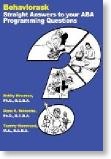school
Autism & Wandering: Common Sense Solutions
15/10/12 12:13 Filed in: autism | Asperger's Syndrome
Fears about children with autism wandering off have kept many a parent awake at night. When you have a child who wanders, or in some cases i
The issue that keeps almost all of us awake is when our child is in the care of the school. Unfortunately, most children with autism in typical classrooms do not have locked, fenced school yards and enough supervision to keep these integrated children safe. The schools are very quick to defend their purportedly safe environments even when a parent sees all the gaping holes in security around the school. If the parent gets too pushy, the school bureaucracy often defends their lackadaisical stance and becomes aggressive with parents, possibly invoking the nuclear option by saying: “if this school is not secure enough for your little Johnny, then perhaps we need to reevaluate whether your child should be integrated.” Since so many parents are fighting for mainstreaming, this ends the discussion immediately and is one of the major motivations to get “lawyered up.” Some parents just give up and accept segregation due to the safety concerns.
Since the parent cannot rely on the school to protect the physical safety or their child, the next fight is to require one-on-one supervision in the school yard. The school then typically deploys the “buddy” system where they get older children to “supervise” the autistic child even in elementary school!
I came across an article by Amy Daniels, Ph.D., an Autism Speaks health policy researcher, who gives an in-depth analysis of autism and wandering. At the end of the article she says: “The time to develop solutions is now.” I couldn’t agree with her more.
Here’s my solution. Every school yard needs to be 100% secured with high fences and no way to get in or out from the school compound. All exits from the school need to be monitored every day, all day.
With the number of children afflicted with autism growing, every school will have to be secured. Not only will this help children with autism, it will also help all children remain safe and give every parent a better night’s sleep.
t may be more accurate to say is an “escape artist,” as long as the child is in your care you can create a safe environment with locks on windows and doors and alarms that sound any time someone opens a window or door. Thousands of parents have created the equivalent of Fort Knox in their home and have trained everyone in the child’s orbit to ensure that the child does not leave. Parents are generally vigilant and the child is safe. Some parents have even elected to have a tracking system on their child as a last resort.The issue that keeps almost all of us awake is when our child is in the care of the school. Unfortunately, most children with autism in typical classrooms do not have locked, fenced school yards and enough supervision to keep these integrated children safe. The schools are very quick to defend their purportedly safe environments even when a parent sees all the gaping holes in security around the school. If the parent gets too pushy, the school bureaucracy often defends their lackadaisical stance and becomes aggressive with parents, possibly invoking the nuclear option by saying: “if this school is not secure enough for your little Johnny, then perhaps we need to reevaluate whether your child should be integrated.” Since so many parents are fighting for mainstreaming, this ends the discussion immediately and is one of the major motivations to get “lawyered up.” Some parents just give up and accept segregation due to the safety concerns.
Since the parent cannot rely on the school to protect the physical safety or their child, the next fight is to require one-on-one supervision in the school yard. The school then typically deploys the “buddy” system where they get older children to “supervise” the autistic child even in elementary school!
I came across an article by Amy Daniels, Ph.D., an Autism Speaks health policy researcher, who gives an in-depth analysis of autism and wandering. At the end of the article she says: “The time to develop solutions is now.” I couldn’t agree with her more.
Here’s my solution. Every school yard needs to be 100% secured with high fences and no way to get in or out from the school compound. All exits from the school need to be monitored every day, all day.
With the number of children afflicted with autism growing, every school will have to be secured. Not only will this help children with autism, it will also help all children remain safe and give every parent a better night’s sleep.
Autism Integration Mustn't Be a Boilerplate Approach
24/04/12 12:21 Filed in: autism
Educational and recreational segregation used to be the model for children with special needs. Then, integration came into vogue. Now we’re got segregationists debating integrationists, and truly, we’re all missing the point.
Recently I heard an interview given by a blogger, Harold Dougherty who describes his child being forced into an integrated setting that was a disaster for his son. He describes the new bureaucrat in charge as being an integration extremist, with very bad consequences for the child. This situation is outrageous!
The issue is not segregation versus integration, but rather that children should never be FORCED to be either integrated or segregated. Instead of being placed in a setting that works best for the child in consultation with the child’s treatment team, some children are apparently placed based on a) the philosophy of the reigning bureaucrat or “educrat” of the day and/or b) the cheapest placement for the school district.
Every child should have the right to be integrated when the integration works FOR THAT CHILD. When an integrated setting is inappropriate and does not work, the answer is not a segregated setting with a group of children who are being ghettoized but rather, one-on-one treatment that is customized for the specific child with autism. Then, the treatment professional can grab every possible integration opportunity available for that child when it works, and can work toward integration opportunities when the child needs to learn pro-social behaviors and routines prior to the effort at integration.
To illustrate, it may be counterproductive for an untreated child suffering from severe autism to be placed in a calculus class. Prior to placing the child in the integrated setting, he or she needs to learn the skills and routines to be successful in that setting. This goes for educational settings as well as recreational settings.
Put simply, the autism treatment team, along with the parent, should be making all integration decisions for the child rather than the school district!
For any education bureaucrats out there, remember, Individual Education Plans (IEPs) are called “individual” for a reason!
Recently I heard an interview given by a blogger, Harold Dougherty who describes his child being forced into an integrated setting that was a disaster for his son. He describes the new bureaucrat in charge as being an integration extremist, with very bad consequences for the child. This situation is outrageous!
The issue is not segregation versus integration, but rather that children should never be FORCED to be either integrated or segregated. Instead of being placed in a setting that works best for the child in consultation with the child’s treatment team, some children are apparently placed based on a) the philosophy of the reigning bureaucrat or “educrat” of the day and/or b) the cheapest placement for the school district.
Every child should have the right to be integrated when the integration works FOR THAT CHILD. When an integrated setting is inappropriate and does not work, the answer is not a segregated setting with a group of children who are being ghettoized but rather, one-on-one treatment that is customized for the specific child with autism. Then, the treatment professional can grab every possible integration opportunity available for that child when it works, and can work toward integration opportunities when the child needs to learn pro-social behaviors and routines prior to the effort at integration.
To illustrate, it may be counterproductive for an untreated child suffering from severe autism to be placed in a calculus class. Prior to placing the child in the integrated setting, he or she needs to learn the skills and routines to be successful in that setting. This goes for educational settings as well as recreational settings.
Put simply, the autism treatment team, along with the parent, should be making all integration decisions for the child rather than the school district!
For any education bureaucrats out there, remember, Individual Education Plans (IEPs) are called “individual” for a reason!
Back to School for Children with Autism: When Do I Put my Lawyer on Speed-Dial?
30/08/11 09:21 Filed in: autism | Asperger's Syndrome
For many parents of children afflicted with autism, the end of summer is also the end of a brief respite from the stress and rancor of battling school district officials and staff for appropriate accommodations for your child. Read more...














